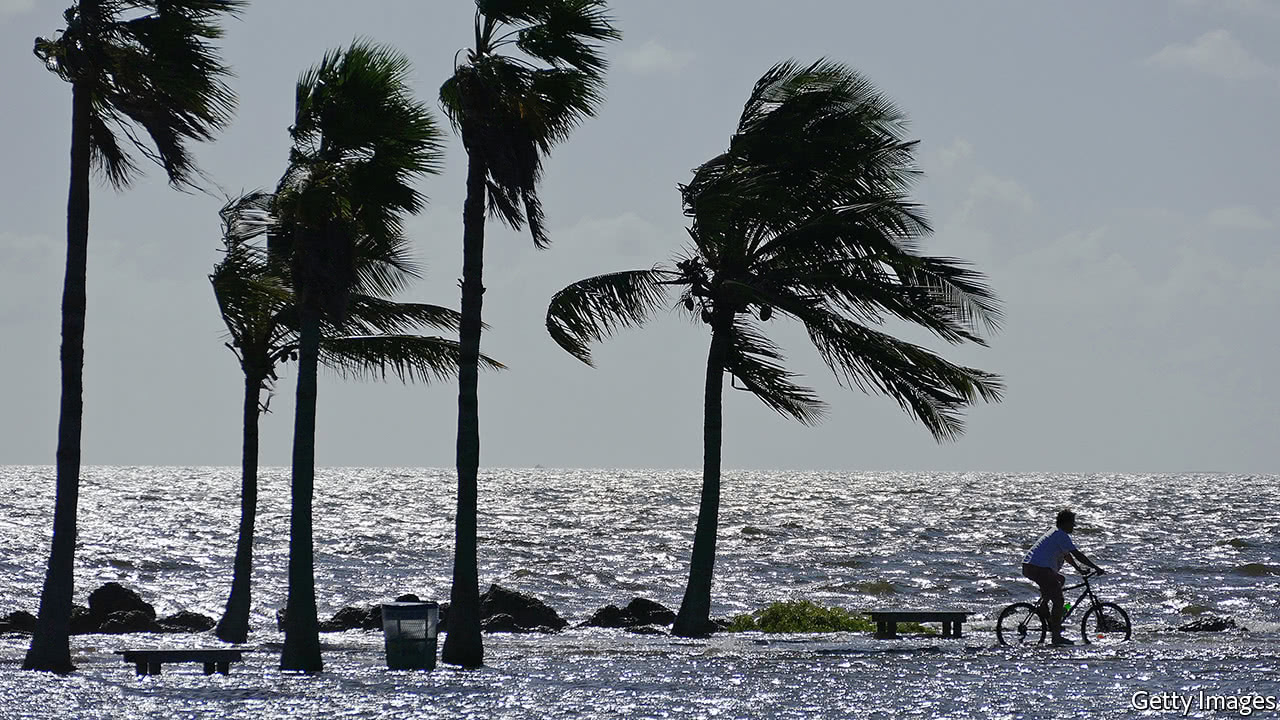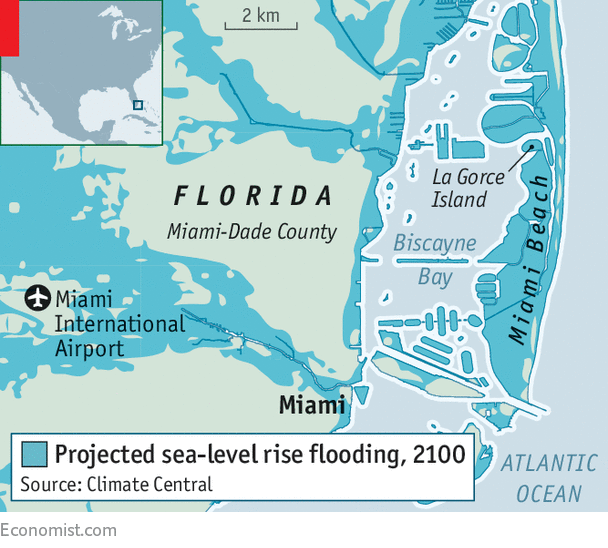South Florida tries to hold back the sea (USA)
Denial rules in Tallahassee; Miami takes matters into its own hands

TURRETS and terracotta tiles, palm trees and pillars adorn properties on La Gorce Island. Trucks roll by on their way to plots where homes are being torn down or built up. “There are a lot more people making improvements here than fleeing,” says Josh Gelfman, a developer. “None of my clients are that worried,” says David Pobiak, an estate agent who sells mansions to Americans, Brazilians and others. “Most people I deal with just want to be able to park their boat behind the property.”Yet the residents of this island towards the north of Miami Beach must go to ever-greater lengths to fight off the rising waters.
Sea levels continue to rise around the world at a rate of about one-eighth of an inch (0.3cm) each year. Quirks of geology, winds and ocean currents mean that different regions will suffer differently. By 2030, the average sea level in south-east Florida is likely to be six to ten inches above the mean level seen in 1992; by 2060, between 14 and 26 inches. By 2100 the Atlantic could devastate the area because of Florida’s porous limestone bedrock and shallow water table, which allow water to well up even behind sea walls. Seasonal tides already bring flooding and aquatic visitors to the Miami area: octopuses in garages and barracudas in swimming pools.
All this threatens local government as well as homeowners. The absence of a state income tax means the Treasury depends on property taxes, which supplied 35% of total revenues in the 2014 fiscal year, according to the Tax Foundation, a think-tank. Income from property taxes helps cover the infrastructure schemes needed to prepare for rising sea levels, such as road-raising and pumping stations.
At the top of the state, denial rules. Rick Scott, Florida’s governor, will not say whether he accepts the links between human activity and global warming. According to a report from 2015 by the Risky Business Project, which tries to calculate the economic costs of climate change, rising waters will threaten up to $36bn-worth of Florida’s coastal property by 2050.
Miami Beach takes the threat seriously. The city plans to spend hundreds of millions of dollars in the next few years on raising streets and improving drainage. Officials hope this will give current and future residents greater confidence in their property investments.
Many of them are already prepared for rising sea levels. In the year to September 2016, Floridians took out almost 1.8m policies with the National Flood Insurance Programme (NFIP), a public insurer—far more than in any other state. The existence of NFIP beyond September 30th requires congressional approval. After disasters elsewhere in recent years, the programme is running a deficit of almost $25bn; critics say that it encourages people to build and live in risky areas. But Floridians can take heart from the fact that senators from New York and Louisiana—both states were inundated after hurricanes not long ago—released draft legislation in April to reauthorise it for another decade.
Properties worth more than $250,000 need private insurance, too, which is spurring owners to defend them better. Coastal Risk Consulting, set up in 2014, offers detailed maps for less than $500 showing how and when houses might flood in future. Dock and Marine Construction, around for more than five decades, is run by experts at elevating properties and replacing crumbling sea walls. Securing the right environmental permits can take years, and the work is expensive; up to $1,600 per foot for a sea wall that may be 100 feet long. But the bother is worth it; homes made ready for a rising sea can be more valuable than ever before.
This article appeared in the United States section of the print edition under the headline "Flow-riders"
The Economist



Comentários
Postar um comentário